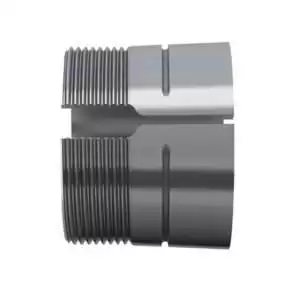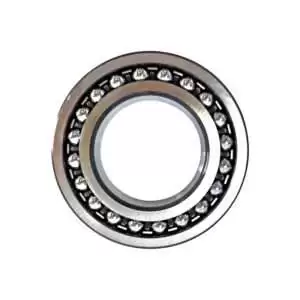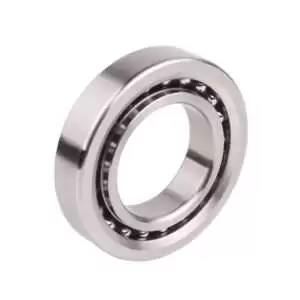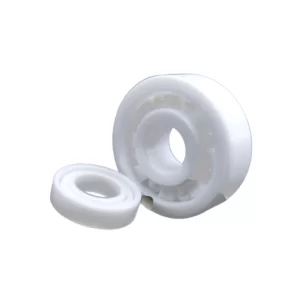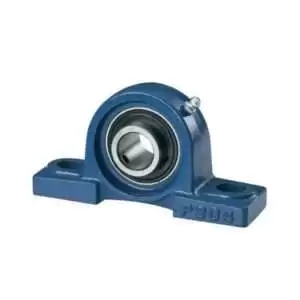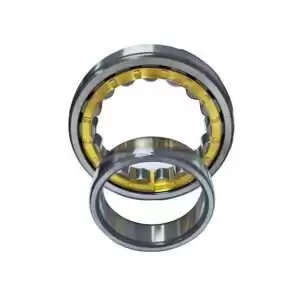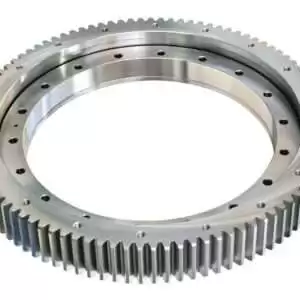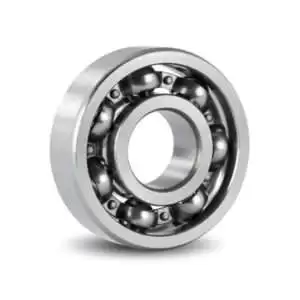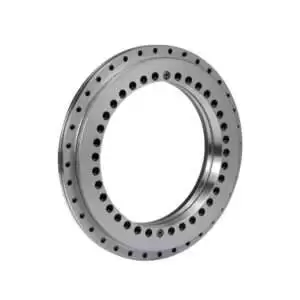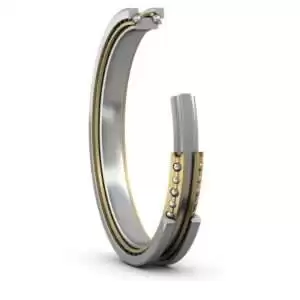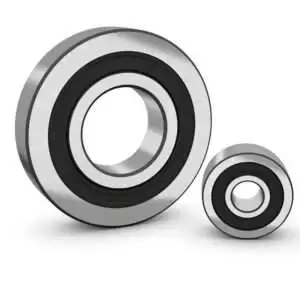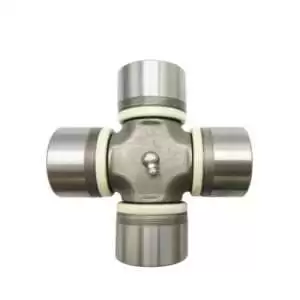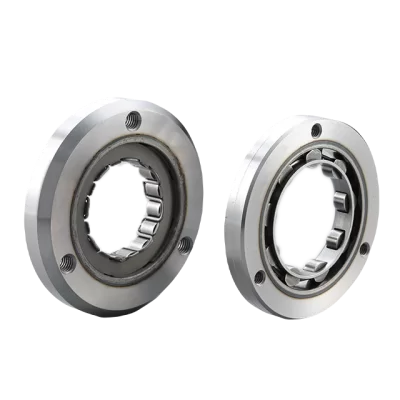How to Install One-Way Clutch Bearings: Key Steps and Tips
Categories One-way clutch bearings, also known as overrunning clutches or sprag clutches, are integral components in machinery requiring controlled motion in one direction. Used in various industrial applications, these bearings can significantly reduce wear and prevent reverse motion under load. This guide walks you through the correct installation steps for one-way clutch bearings, from initial inspection to secure testing, while highlighting common pitfalls to avoid. Before starting the installation, carefully inspect the bearing and its components: A thorough initial inspection saves time and effort, minimizing risks of misalignment or mechanical malfunction. Accurate tolerances are essential for optimal bearing performance. Here’s what to do: Any discrepancies in fit or tolerance can lead to bearing failure, excessive wear, or even machine damage over time. Preparation of the shaft and housing is key to a stable, long-lasting bearing installation: This preparation step helps ensure that the bearing fits correctly and operates smoothly. Now it’s time to place the bearing within the shaft and housing: Proper insertion is critical to preventing bearing misalignment or early wear. Lubrication is essential for bearing performance, particularly for one-way clutch bearings: Correct lubrication minimizes friction, reduces wear, and maximizes the lifespan of the bearing. With the bearing inserted and lubricated, the next step is securing and testing it: Testing ensures that the bearing is secure and ready for operational use. Ensuring a successful installation of one-way clutch bearings requires careful attention to detail. Here are the common pitfalls that can jeopardize performance, cause early wear, or even lead to system failure. One of the most frequent mistakes in installing one-way clutch bearings is incorrect orientation. These bearings are designed to lock in one direction and rotate freely in the opposite. Installing them in the wrong orientation prevents them from performing their primary function, often leading to operational issues or complete failure. Solution: Always check the manufacturer’s specifications and diagrams before installation, and confirm the direction of rotation aligns with your application requirements. Precision fit and proper clearance are essential for bearing function. Ignoring the tolerance limits or fitting bearings too loosely or tightly can lead to: Solution: Use precision tools to measure the shaft and housing, ensuring they meet the recommended tolerances for optimal fit. This reduces unnecessary movement and extends bearing life. Lubrication is crucial for the proper functioning of one-way clutch bearings. Insufficient lubrication results in excess friction, causing high heat buildup, which can degrade the bearing’s materials. Over time, this leads to binding, premature wear, or even bearing seizure. Solution: Consult the manufacturer’s guidelines on the appropriate lubricant type and application frequency. Always apply a controlled amount, avoiding over-lubrication, which can attract debris and compromise bearing performance. Using incorrect tools during installation, such as hammers or makeshift pressing methods, is a common error that can damage both the bearing and housing. Forceful installation methods can lead to: Solution: Use a bearing press or arbor press to evenly and securely install the bearing without damaging the components. Avoid any tools that could exert uneven or excessive force on the bearing. Skipping a thorough inspection of components before installation is often a hidden culprit in failed bearing installations. Overlooking burrs, scratches, or other surface imperfections in the shaft or housing can disrupt the installation process or lead to bearing misalignment. Solution: Always clean and inspect both the shaft and housing before installing the bearing, removing any irregularities that could hinder a smooth installation. A: One-way clutch bearings allow rotation in only one direction, effectively preventing reverse rotation. They are commonly used in applications where controlled directional motion is needed, such as conveyor systems, indexing devices, and automotive transmissions. A: These bearings are widely used in automotive transmissions, conveyor systems, industrial machinery, and even in electric bikes. They control rotational movement and prevent reverse rotation, contributing to improved efficiency and durability. A: The orientation of the one-way clutch bearing is critical. Install the bearing so that it rotates freely in the intended direction and locks when rotated in the opposite direction. Double-check orientation as installing it backward will prevent it from functioning correctly. A: Tolerances vary by bearing model and application. It’s essential to adhere to the manufacturer’s specified tolerance limits for both the shaft and housing. Incorrect tolerances can lead to loose or overly tight fits, causing wear, misalignment, or operational failure. A: No, using the wrong lubricant can compromise the clutch mechanism. Always use the lubricant type recommended by the bearing manufacturer, as it will be tailored to the bearing’s material and operational requirements. The wrong lubricant can interfere with clutch performance or cause early wear. A: If the bearing feels loose, it’s possible the shaft or housing dimensions are out of tolerance. Re-measure both components to confirm they fall within specified limits. If problems persist, consult with the bearing manufacturer to determine if any corrective measures are necessary. A: Some one-way clutch bearings require pre-lubrication before installation. Check the manufacturer’s guidelines, as pre-lubrication ensures smooth initial operation and helps prevent damage during the break-in period. However, over-lubrication should be avoided, as it can attract dust and debris. A: A bearing press or arbor press is recommended for installing these bearings. Avoid using hammers or other tools that might exert uneven force, as this can damage the bearing and lead to misalignment. Proper tools help ensure a smooth and even installation. A: After securing the bearing, perform a manual rotation test to confirm it spins freely in the intended direction and locks in the opposite direction. Running the equipment at a low load also helps verify proper function and alignment. A: Common mistakes include incorrect orientation, ignoring tolerance requirements, neglecting lubrication, and using improper tools. These errors can result in premature wear or operational failure. To avoid issues, follow each step carefully and consult the manufacturer’s guidelines as needed. 1. How to Install One-Way Clutch Bearings 2. Understand The Effect Of One Way Clutch Bearings And Their Keyways On Torque Transmission 3. Unlocking Momentum: Mastering One Way Bearings One-way clutch bearings, also known as overrunning clutches or sprag clutches, are integral components in machinery requiring controlled motion in one direction. Used in various industrial applications, these bearings can significantly reduce wear and prevent reverse motion under load. This guide walks you through the correct installation steps for one-way clutch bearings, from initial inspection to secure testing, while highlighting common pitfalls to avoid. One-way clutch bearings, also known as overrunning clutches or sprag clutches, are integral components in machinery requiring controlled motion in one direction. Used in various industrial applications, these bearings can significantly reduce wear and prevent reverse motion under load. This guide walks you through the correct installation steps for one-way clutch bearings, from initial inspection to secure testing, while highlighting common pitfalls to avoid. Before starting the installation, carefully inspect the bearing and its components: A thorough initial inspection saves time and effort, minimizing risks of misalignment or mechanical malfunction. Accurate tolerances are essential for optimal bearing performance. Here’s what to do: Any discrepancies in fit or tolerance can lead to bearing failure, excessive wear, or even machine damage over time. Preparation of the shaft and housing is key to a stable, long-lasting bearing installation: This preparation step helps ensure that the bearing fits correctly and operates smoothly. Now it’s time to place the bearing within the shaft and housing: Proper insertion is critical to preventing bearing misalignment or early wear. The purpose of using fabric sandwiched rubber sealing material is to increase the stiffness and strength of the sealing ring, prevent rubber extrusion, and make it suitable for high pressure. At the same time, in the process of wear, rubber wears ahead of fabric. When the rubber of the parts with high contact pressure wears off, the wear extends to the parts with low contact pressure, so that the wear of the whole sealing surface tends to be uniform, but the friction does not change significantly. However, the lip of the rubber sealing ring sandwiched with fabric can easily scrape off the oil film on the sliding surface, so the lubricity is worse than that of leather and polytetrafluoroethylene. DG Zhongxingshun Sealing Products Factory , https://www.zxs-seal.com
Adapter Sleeves (9)
Ball Bearings (11)
Ball Screw Bearings (2)
Ceramic Bearings (27)
Pillow Block Bearings (4)
Plain Bearings (32)
Roller Bearings (12)
Slewing Bearings (43)
Sliding Block (3)
Stainless Steel Bearings (27)
Super Precision Bearings (6)
Thin Section Bearings (9)
Track Rollers (4)
Universal Joints (1)
Introduction to One-Way Clutch Bearings
What Are One-Way Clutch Bearings?
Step 1: Inspect Bearing Components
Step 2: Verify Fit and Tolerances
Step 3: Prepare Shaft and Housing
Step 4: Insert the Bearing
Step 5: Apply Proper Lubrication
Step 6: Secure and Test Bearing
Common Mistakes to Avoid
1. Incorrect Orientation
2. Improper Fit or Clearance
3. Neglecting Lubrication
4. Using Improper Tools
5. Skipping Inspection of Components
10 FAQs About One-Way Clutch Bearings Installation
Reference
Introduction to One-Way Clutch Bearings
What Are One-Way Clutch Bearings?
Introduction to One-Way Clutch Bearings
What Are One-Way Clutch Bearings?
Step 1: Inspect Bearing Components
Step 2: Verify Fit and Tolerances
Step 3: Prepare Shaft and Housing
Step 4: Insert the Bearing
Step 5: Apply Proper Lubrication

